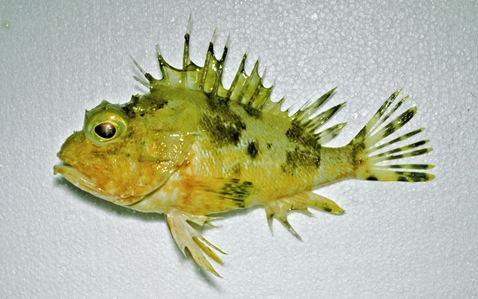General Description
Robust head and body, tapering toward tail base, head armed with low spines, region between eyes flat and scaled; anterior dorsal-fin spines very long, only connected at base, 4th spine longest; pectoral fins large, hind margin rounded; underside of lower jaw with 3 large distinct pores on either side. Yellowish, usually with 5 large poorly-defined dark blotches on side, especially below spinous and soft parts of dorsal fin body. To 32 cm.
Biology
Although common, especially in moderately deep waters, this species is rarely seen by anglers. It is taken as bycatch in commercial trawls. The venomous fin spines can inflict a very painful wound. The species is no longer found in Port Phillip (Victoria), although there are confirmed records from the late nineteenth and early twentieth centuries.
Habitat
On and near rocky reefs at depths of 43-288 m, but usually 50-200 m.
Reefs
Distribution guide
Southern Australia.
Species Group
Depth
Shallow (1-30 m)
Deep ( > 30 m)
Water Column
Max Size
32 cm
Diet
Carnivore
Harmful
Venomous spines can inflict mild to severe pain.
Commercial Species
Yes
Global Dispersal
Native to Australia
Conservation Status
- DSE Advisory List : Not listed
- EPBC Act 1999 : Not listed
- IUCN Red List : Not listed





